The goal of this project is to compare between the economic stability of an agriculture first city.
Hamburg’s agricultural wealth is largely connected to its surrounding regions—particularly Schleswig-Holstein and Lower Saxony, which are among Germany’s leading food producers. Consequently, we focused on peripheral areas of the city that have recently transitioned into agricultural land, allowing us to monitor growth and development as closely as possible.
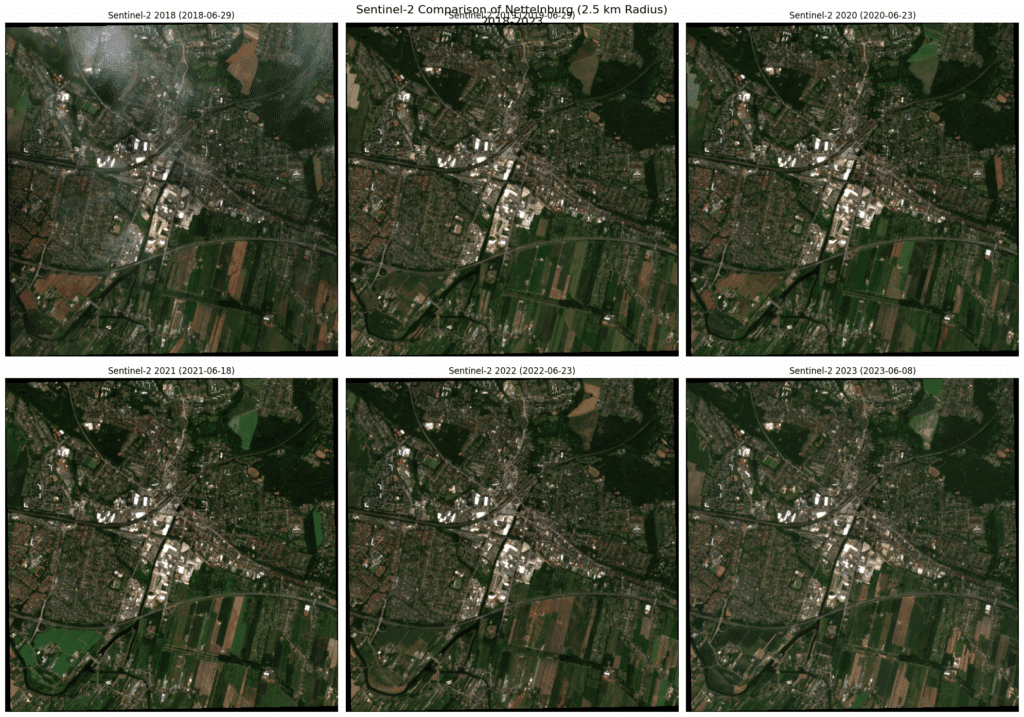
Satellite image sourcing
Using the imagery from the Sentinal-2 satellite we could access a collection of high definition images from Nettlenburg, Hamburg, Germany we could narrow down the region for analysis. Later, to get a clear picture of the image we found the date and time with the clearest skies and the highest yielding season.
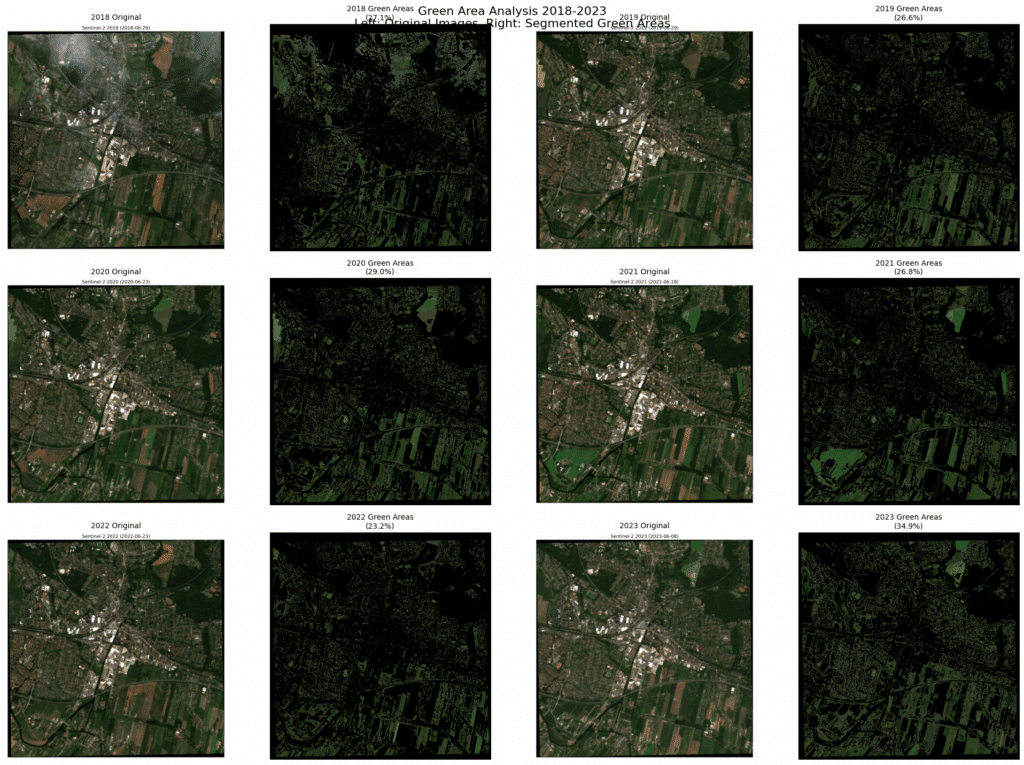
Image segmentation and analysis
Using OpenCV to segment the image based on a range of green colour spectrums we extracted the percentage of green cover. The metric was done in such a way that the area of 625 Hectors was taken and converted into percentages with respect to the pixel density of the image.

GDP comparison
This stability in the green cover questioned our approach to extract the economic impact as there is a drastic increase in 2023, this got us to be more curious about it. The GDP of Hamburg is interesting since it is constantly fluctuating and from 2022 – 2023 soon after the covid hit, the percentage has gone down distinctly compared to the average.
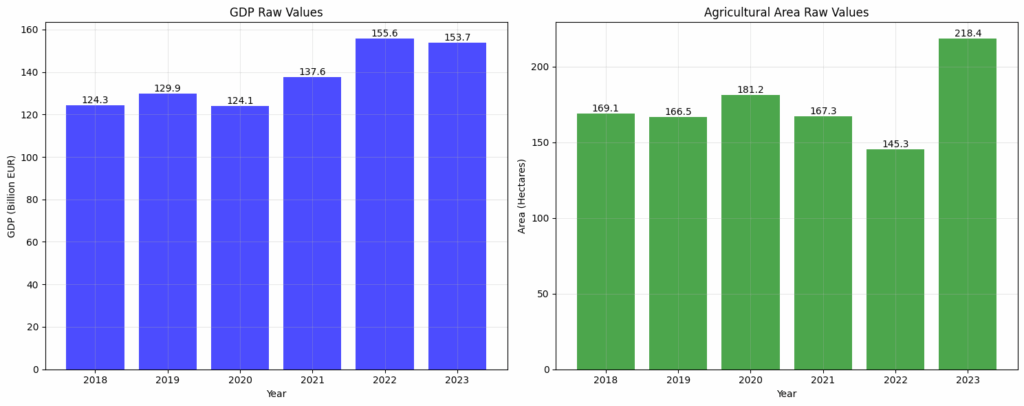
But as you can see, the agricultural revenue seem to be now on an all time high and this has caught up with the city’s annual revenue in terms of a percentage figure in a normalised circumstance.

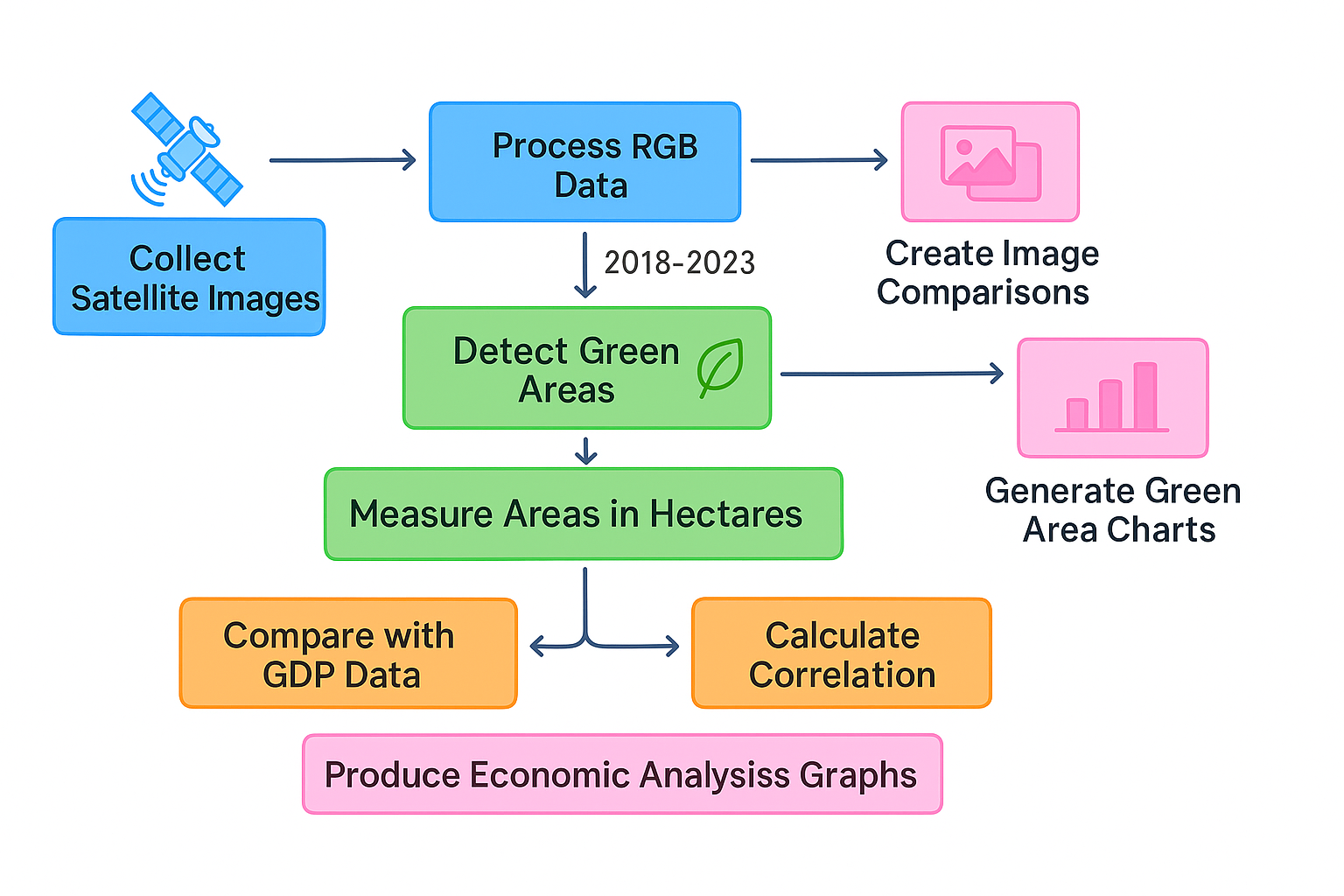
Conclusion
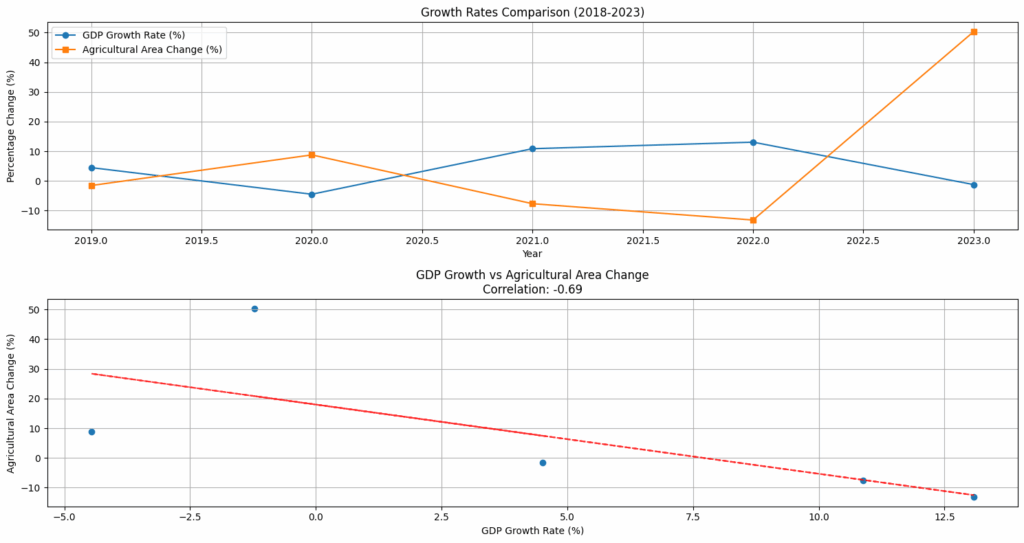
Over the years of 2019 – 2023, the GDP has plummeted and in the year 2023 it is reaching the numbers that are close to the 2020. This is not a good sign for a city that is very much dependant on its agricultural wealth. It seems like the agricultural production of the city has increased but the economic wealth has not been at a benefit. There can be various reasons, majority maybe that the produce is consumed within the city and that leads to a minimal impact in the GDP but makes the public satisfied, this could also prove that GDP is not the right metric to measure a place’s success as the place might be a self sustaining economy and does not depend on trade.
On a future note, we would like to elaborately research on this corelation with the Global Happiness Index (GHI) to understand the public satisfaction and living conditions.

